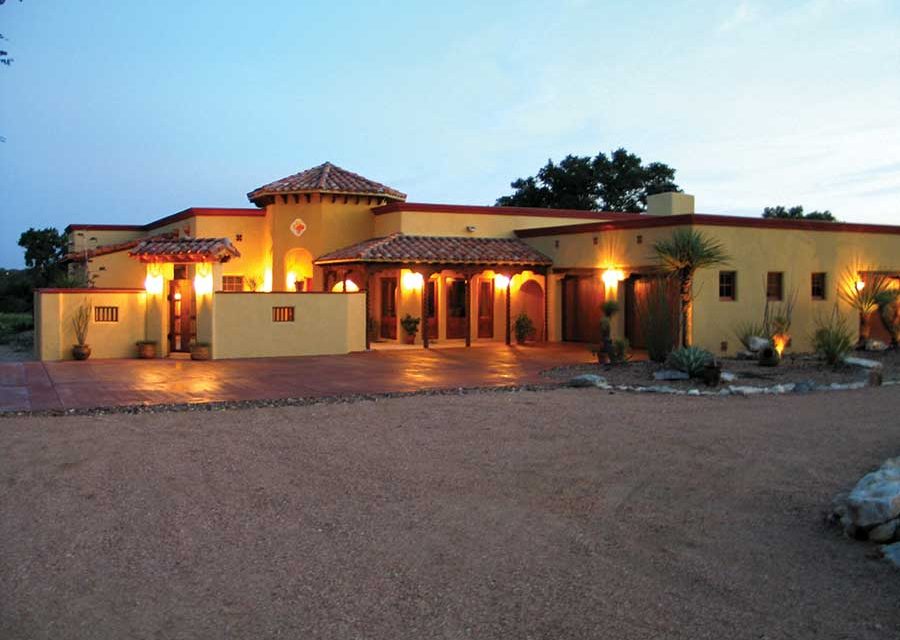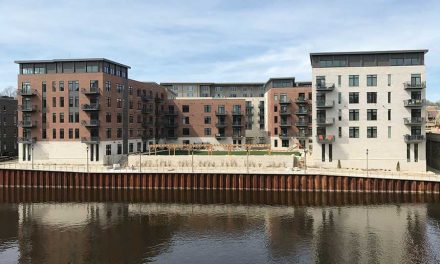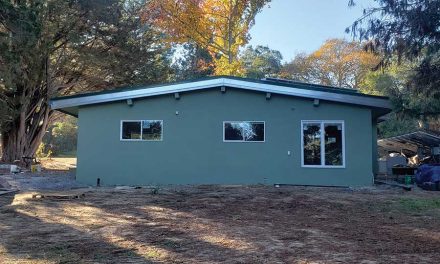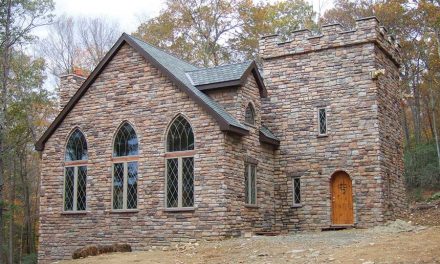This mission-style residence built with Grid-Wall, a cement-EPS composite, showcases the beauty and style these ICF systems can create.
In addition to the regular expanded polystyrene (EPS) or polyurethane foams used by most manufacturers, there are several block manufacturers that use other materials. Blocks made of cement-EPS blends, for instance offer many advantages to those made from regular EPS.
“This product is completely fireproof,” says Claudette Sumerall, marketing manager at Amazon Forms. “You can put a blowtorch on our product and it will not melt or burn.”
Most cement-EPS composite blocks have fire ratings in excess of 4 hours, and additional sheathing isn’t required to meet fire code. Stuccos and plasters can be applied directly to the block without mesh and without sheetrock and still meet code. As an additional green benefit, many are made with 100% recycled foam.
Because of their density and weight, walls up to 10 feet high can be poured without bracing. The screen grid (post-and-beam) design means a cubic yard of concrete will fill almost 100 sq. ft. of wall, nearly double most ICFs, and the blocks will tolerate high-slump concrete, so getting the mix into the horizontal beams isn’t a problem.
As part of the curing process, the concrete penetrates into the porous block and locks into place. It will not shrink away from the sides. When filled, the walls will not rot, decay, or mold, and are completely termite-proof. Because of their density, nails and screws hold wherever they are driven, making interior and exterior finishes much easier to apply. Tech Block products are available with OSB sheathing on one side, so even cabinets can be installed with very little effort.
The disadvantage is that the blocks are heavy. Rastra’s 10-foot long planks weigh between 150 and 250 lbs. Amazon’s Grid-Wall is the size of a conventional ICF block, 48”x16” and weighs a more manageable 25 to 40 lbs., depending on wall thickness.
Blocks are easily cut and shaped with carpenter’s wood tools. Utility chases can be cut with a saw or router, but not a hot-knife.
The technology has a proven track record, stretching back more than 30 years, when Karl Holik patented Rastra, the first block of this kind, back in 1972. Holik notes, “More general contractors and subcontractors have built their own homes with Rastra than any other alternative building material.”
Durisol, which makes it’s block out of wood fiber and cement, has been around since 1953 and is the only product on either comparison chart that doesn’t use some sort of foam. Royal Building Systems uses vinyl to contain the concrete.














